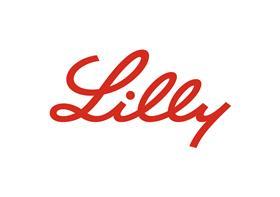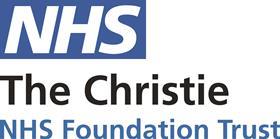Co-authors Stephanie Harvey and Sacha Howell shed light on how redesigning breast cancer care pathways for accessible and efficient treatment delivery can improve patient outcomes amidst the face of NHS capacity challenges
This article has been developed and paid for by Eli Lilly and co-authored by Stephanie Harvey, associate director of NHS Collaboration Programme, Eli Lilly and Company and Sacha Howell, senior lecturer and honorary consultant in Medical Oncology, The University of Manchester and The Christie Foundation Trust
Breast cancer survival rates are making huge strides


In 1971, patients diagnosed with breast cancer had around a 40 per cent chance of surviving for 10 years. Today, it’s nearly 80 per cent[i]. This is due, in part, to recently developed treatments for early breast cancer becoming licensed and accessible in the UK. However, some treatments increase demand for breast cancer services through an increase in the amount and intensity of clinical resources required to manage patients.
The NHS is facing a capacity crisis, and this is being felt acutely in oncology. Cancer services in England are experiencing a 15 per cent shortfall in medical staff, with an additional 175 clinical oncologists required to deliver safe and effective patient care[ii]. By 2027, it is projected that the shortfall will rise to 24 per cent[ii].
To ensure equitable access to NICE-recommended treatments, we need to consider how innovations reach cancer patients whilst minimising additional resource demands or clinicians to deliver them.
Lilly UK collaborated with The Christie Foundation Trust to design a new and future-proof model of care, able to cope with the increasing resource demand that recently developed breast cancer treatments would place on services, whilst maintaining high-quality patient experience of care.
The redesign project required core input from all stakeholders involved in the clinical pathway including consultants, nurses, pharmacists, digital team members, phlebotomy, managerial, and administrative staff. Each member contributed to the development of seven success criteria that the pathway design was measured against.
The Lean Six Sigma DMAIC (Define, Measure, Analyse, Improve & Control) framework was used to develop decision-making criteria and appraise different options for the delivery of the four core processes within the pathway. By re-evaluating standard processes for core components – blood results, toxicity management, prescribing and dispensing of medications, and clinical management – the project developed and implemented a new regional clinical pathway ensuring access to NICE-recommended treatments for all eligible patients covering a total population greater than three million.
Multiple solutions were designed for each of the four core processes and ranked using success criteria to pick the optimal solution. One of the most impactful solutions was the use of electronic patient reported outcome measures to manage patients remotely. ePROMS have previously been shown to prompt patients to discuss their health, increase patient awareness and education[iii] and track individual progress with symptom management[iv],[v] resulting in a more personalised care pathway for patients[vi].
The use of ePROMs had a positive impact on pathway efficiency and improvement to patient outcomes. Once established on treatment, ePROMs and bloods were reviewed by SACT nurses and, in the absence of patient or staff concerns, patients were informed by text that the next cycle of treatment would be dispensed and the follow up touchpoint scheduled. This replaced the usual telephone or face-to-face appointment and significantly improved efficiency.
Patients who used the ePROMs system were able to have more focused discussions on their ongoing management. The average time for telephone reviews was significantly shorter with ePROMs, effectively building capacity back into the pathway. In one scenario, the service redesign calculated that for a population of 3.2 million, there was a need to create capacity for an additional 36 clinic appointments per week for recently developed breast cancer treatments.[vii]
The total predicted staff resource required was 46 hours per week. By implementing ePROMs in combination with the pathway redesign, the requirement for consultant time was far less than in a traditional pathway model. In the redesigned pathway the following hours were required: administrator 8.9 hours, medic 2.7 hours, non-medic prescriber 18.4 hours, and non-medic non-prescriber 16.1 hours, which increased cost-effectiveness and availability of clinical staff.[viii]
Patients embraced the changes, with all patients having adopted ePROMs by the third month, and almost all patients (91 per cent) reporting that they felt involved in their care.[ix]
As similar issues are being faced by cancer centres across the UK, this project may provide a blueprint for service redesign. Efforts have been made to disseminate learnings and best practices from the project by both Lilly and Christie to support the wider NHS in enabling access to treatments while minimising the need for additional workforce. Lilly continues to enter into collaborative projects with the NHS supporting the introduction of ePROMs in breast cancer pathways and is planning to provide an ePROMs platform to NHS organisations across the UK as a Donation of Service from 2024.
Collaboration that leverages the respective strengths of NHS trusts and pharmaceutical companies is an impactful way to address the current capacity crisis and ensure that patients receive the best possible care.
References
[i] Cancer Research UK (2023) Cancer statistics. Cancer survival. Longer, better lives: A Manifesto for cancer research and care. [Accessed November 2023].
[ii] The Royal College of Radiologists (2022) Clinical Oncology Workforce Census. [Accessed November 2023].
[iii] Lombi, L., Alfieri, S. and Brunelli, C. (2023). ‘‘Why should I fill out this questionnaire?’ A qualitative study of cancer patients’ perspectives on the integration of e-PROMs in routine clinical care’, European Journal of Oncology Nursing. [Accessed November 2023].
[iv] Field, J., Holmes, M. M. and Newell, D. (2019). ‘PROMs data: can it be used to make decisions for individual patients? A narrative review’, Patient Related Outcome Measures. [Accessed November 2023].
[v] Oldenburger, E., et al. (2022). ‘Using ePROMs for follow-up after palliative radiotherapy: An exploratory study with patients and health care providers’, Patient Education and Counselling. [Accessed November 2023].
[vi] Meirte, J., et al. (2020). ‘Benefits and Disadvantages of Electronic Patient-reported Outcome Measures: Systematic Review’, JMIR Perioperative Medicine. [Accessed November 2023].
[vii] Data on File. Eli Lilly and Company. Collaborative Working Project Report. 2022
[viii] Data on File. Eli Lilly and Company. Christie Quality Improvement Management Report. 2023
[ix] Data on file. Eli Lilly and Company. Dissertation. 2023


























